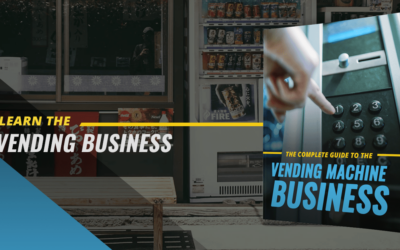Vending machine financing can make or break your vending machine business. Whether you are a young entrepreneur or a retiree looking to add another income stream to your portfolio, starting a vending machine business is a good option. Vending machines are synonymous...
The Vending Business Blog
The Complete Guide to the Vending Machine Business
Nov 15, 2019 | Start A Vending Machine Business, Vending Business Show, Vending Operation
Welcome to the complete guide to the vending machine business. How The Vending Machine Business Work How to Make Money In Vending Strategies to Find Profitable Vending Locations How to Service A New Vending Account – Part 1 How to Service A New Vending Account – Part...
Buying Vending Machines for your Place of Business -What Are The Perks
Oct 10, 2019 | Vending Operation
What Are The Perks of Buying Vending Machines For Your Place of Work? When it comes to buying vending machines, there are many perks for a business or organization. These machines make a significant write-off, and financing is available. For places of business with...
Vending Operator Tools: Money Handling
Aug 5, 2014 | Vending Operation
Vending Operator Tools Money Handling Tips and tools to get your money from the vending machine to the bank: Inventory money from each machine using money bags Money goes into the truck Decide on a truck security plan Count money by purchasing a counter for coins and...
Vending Operator Tools Choosing Hand Trucks
Jul 15, 2014 | Vending Operation
Vending Operator Tools Choosing Hand Trucks Transporting soda and drinks is very physical to move but with the right hand truck it's relatively easy. Traditional hand trucks work just fine for both soda and snack routes. Convertible hand trucks work better for volume...



